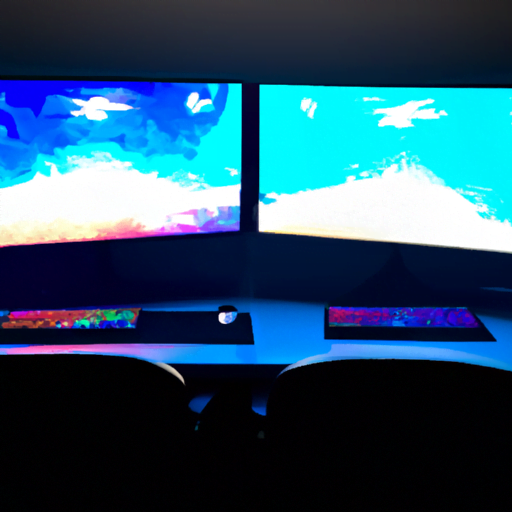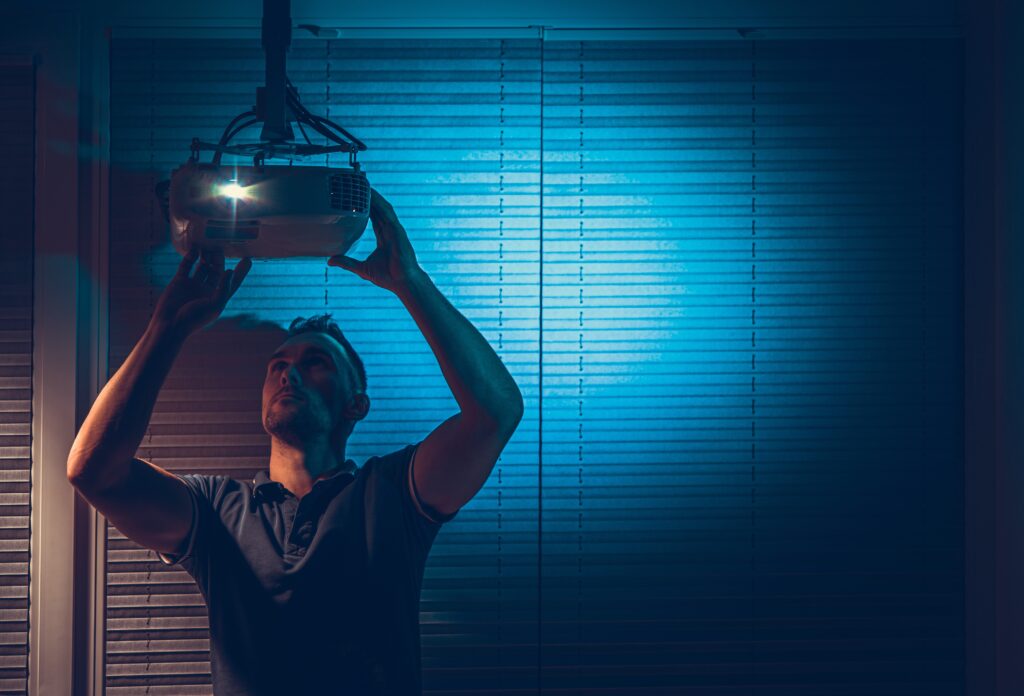So, you’ve finally decided to upgrade your computer setup and venture into the world of dual monitors. Good choice! But now comes the tricky part – how exactly do you set up a dual monitor setup? Well, fear not, because this article has got you covered. In just a few simple steps, you’ll be on your way to enjoying the benefits of two screens, whether it’s for productivity, gaming, or simply multitasking like a pro. Ready to get started? Let’s dive in! Setting up a dual monitor setup can greatly improve your productivity and enhance your computing experience. Whether you are a professional needing multiple screens for work or simply want to have a larger display area for gaming or multimedia purposes, the process is relatively straightforward. In this article, we will guide you through the necessary steps to set up your dual monitor setup.
Check the hardware requirements
Before diving into the setup process, it’s important to ensure that your hardware meets the requirements for a dual monitor setup. The key components to check are your graphics card compatibility and the available video ports on your computer.
Check your graphics card compatibility
To run a dual monitor setup, your graphics card needs to support multiple displays. Most modern graphics cards have this capability, but it’s always a good idea to double-check. Check your graphics card’s specifications or consult the manufacturer’s website to confirm that it supports dual monitors.
Look for available video ports on your computer
Next, you need to identify the video ports available on your computer. Common video ports include HDMI, DisplayPort, DVI, and VGA. Depending on the ports available, you may need to obtain the necessary cables or adapters to connect your monitors.
Ensure you have the necessary cables and adapters
To connect your monitors to your computer, you will need the appropriate cables and adapters. If your graphics card and monitors support HDMI, it’s often the simplest and most common choice. However, if your computer or monitor has different video ports, you may need adapters or specific cables to ensure compatibility. Make sure to double-check the required connectors and purchase any additional cables or adapters if needed.
Prepare your computer and monitors
Before setting up your dual monitor setup, it’s important to turn off your computer and monitors. This ensures that you can safely connect the monitors without any risk of damaging the devices or causing electrical issues. Once everything is powered off, you can proceed with the following steps.
Connect the monitors to your computer
Start by connecting your monitors to your computer using the appropriate cables or adapters. Plug one end of the cable into the appropriate video port on your computer and the other end into the corresponding port on your monitors. Ensure that the cables are securely connected to avoid any display or connection issues.
Plug in the monitors and power them on
Once the monitors are connected to your computer, you can proceed to plug them into a power source and turn them on. It’s recommended to connect the monitors directly to a power outlet to ensure a stable power supply. After powering on the monitors, give them a few moments to initialize and display an image.
Adjust the display settings on your computer
Now that your monitors are physically connected, it’s time to adjust the display settings on your computer to utilize the dual monitor setup effectively. The steps for accessing the display settings may vary slightly depending on your operating system, but the overall process remains similar.
Access the display settings
To adjust the display settings on your computer, navigate to the operating system’s display settings menu. On Windows, you can right-click on the desktop and select “Display settings” from the contextual menu. On macOS, go to the Apple menu, select “System Preferences,” and then click on the “Displays” icon.
Detect the new monitors
Once you are in the display settings menu, your computer should automatically detect the newly connected monitors. If the monitors are not detected automatically, look for a button or option to manually detect displays. This will ensure that your computer recognizes both monitors and allows you to configure them.
Choose the desired display mode
Now that your monitors are detected, you can choose the desired display mode. Common options include “Duplicate,” where both monitors display the same content, and “Extend,” where the monitors act as separate displays, allowing you to have different applications or windows on each screen. Select the display mode that best suits your needs.
Arrange and extend the display
Once you have chosen the display mode, it’s time to arrange and extend the display on your dual monitor setup. This step ensures that your primary and secondary displays are correctly configured and that the monitors are arranged in the desired order.
Configure the primary and secondary display
In an extended display setup, you need to specify which monitor will be the primary display and which will be the secondary display. The primary display typically contains your desktop icons and taskbar. In the display settings menu, look for an option to designate the primary display and make the necessary selection.
Set the correct monitor order
To ensure that your dual monitor setup aligns with your physical monitor placement, it’s crucial to set the correct monitor order. This step ensures that when you move your cursor between the screens, it transitions smoothly based on their physical location. In the display settings menu, you should find an option to rearrange the monitors according to their physical placement.
Adjust the screen resolution and orientation
In some cases, you may need to adjust the screen resolution and orientation of your monitors to achieve the desired display quality. In the display settings menu, you can change the resolution to match the native resolution of each monitor. Additionally, you can adjust the orientation if you want to rotate any of the screens to a portrait or landscape orientation.
Adjust the monitor settings
To fine-tune your dual monitor setup, it’s important to adjust the settings on each individual monitor. This step ensures that each monitor’s colors, brightness, and other visual settings are optimized for your viewing pleasure.
Fine-tune the individual monitor settings
Access the on-screen display (OSD) menu of each monitor by using the buttons or controls located on the monitor itself. From there, you can adjust various settings such as brightness, contrast, color temperature, and sharpness. Spend some time experimenting with these settings to achieve the best visual output for each monitor.
Calibrate the color and brightness
For a more accurate and consistent color representation across both monitors, consider calibrating the color and brightness using a calibration tool or software. This process involves adjusting the color temperature, gamma, and other color settings to achieve a more accurate representation of colors on your monitors.
Enable any additional features
Some monitors may come with additional features that can enhance your viewing experience. These features may include blue light filters to reduce eye strain, adaptive sync technologies for smoother gameplay, or built-in speakers for audio output. Explore the monitor’s settings menu to enable and configure any additional features that your monitors offer.
Customize the desktop
Now that your dual monitor setup is fully operational, you can further customize your desktop to suit your preferences and enhance your daily workflow. Here are a few customization options to consider.
Choose a wallpaper and screensaver
Select a wallpaper that spans both monitors or choose separate wallpapers for each monitor to add a personal touch to your dual monitor setup. You can also set up a screensaver to activate when the computer is idle. Experiment with different images and designs to find the perfect combination that suits your style.
Configure taskbar settings
In an extended display setup, the taskbar spans both monitors by default. However, you can configure the taskbar settings to display only on the primary monitor or enable the taskbar to appear on both screens. Depending on your preference, you can choose the option that allows for seamless multitasking and easy access to your most frequently used applications.
Organize icons and shortcuts
With a dual monitor setup, you have extra space to organize your icons and shortcuts. Take advantage of this additional desktop real estate by arranging your icons and shortcuts in a way that makes them easily accessible. Consider grouping related applications or categorizing icons based on different tasks or projects.
Optimize productivity with dual monitors
One of the primary benefits of a dual monitor setup is increased productivity. With more screen space, you can manage multiple tasks simultaneously and streamline your workflow. Here are a few ways to optimize productivity with dual monitors.
Snap windows and use split-screen view
Most operating systems allow you to “snap” windows to different sides of the screen or create split-screen views. This feature enables you to have two applications side by side, making it effortless to drag and drop files, reference information, or compare data without the need to constantly switch between windows.
Utilize virtual desktops
Virtual desktops provide another layer of organization and productivity. With this feature, you can create multiple desktop spaces and allocate specific applications or windows to each space. This allows you to group related tasks or projects and switch between them seamlessly, without cluttering your primary desktop space.
Extend workspace with multiple windows
With a dual monitor setup, you can extend your workspace by utilizing multiple windows across both screens. For example, you can have a document on one monitor while performing research or referencing information on the other. This setup streamlines your work and minimizes distractions, as you can dedicate each monitor to different aspects of a task.
Troubleshooting common issues
While setting up a dual monitor setup is generally straightforward, you may encounter some common issues along the way. Here are a few troubleshooting steps to help resolve these issues and ensure a smooth dual monitor experience.
Check cable connections and power
If one or both of your monitors are not displaying any images, check the cable connections and ensure that they are properly seated. Also, make sure that the monitors are receiving power and that the cables are securely plugged into the power outlet.
Update graphics card drivers
Outdated or incompatible graphics card drivers may cause issues with your dual monitor setup. To resolve this, visit the manufacturer’s website and download the latest drivers for your graphics card. Install the updated drivers and restart your computer to apply the changes.
Adjust monitor refresh rates
If you notice screen flickering or blurry images on one or both of your monitors, it could be due to mismatched refresh rates. In the display settings menu, check that the refresh rates for both monitors are set to the same value. Adjust the refresh rates if necessary to achieve a smooth and clear display.
Useful tips and tricks
To make the most out of your dual monitor setup, here are a few additional tips and tricks that you may find helpful.
Use keyboard shortcuts for quick actions
Familiarize yourself with keyboard shortcuts that can expedite your workflow. Operating systems often offer shortcut combinations to move windows between monitors, switch between virtual desktops, and perform various other actions. Practice these shortcuts to increase your efficiency and productivity.
Try different monitor layouts
Don’t be afraid to experiment with different monitor layouts to find the arrangement that works best for you. You can stack the monitors vertically, position them side by side, or have one monitor placed centrally with the other angled to create a multi-monitor curve. Find the layout that maximizes your comfort and productivity.
Consider using a monitor arm or stand
To further optimize your dual monitor setup, consider investing in a monitor arm or stand. These accessories provide flexible positioning options, allowing you to adjust the height, tilt, and rotation of each monitor independently. This customization can enhance ergonomics and reduce strain on your neck and eyes during prolonged use.
Conclusion
By following these steps and exploring the possibilities of a dual monitor setup, you can significantly improve your productivity and enjoyment while using your computer. Remember to check your hardware requirements, prepare your computer and monitors, adjust the display and monitor settings, customize your desktop, and utilize productivity-enhancing techniques. Enjoy the expanded screen real estate, streamline your workflow, and make the most of your dual monitor setup.



